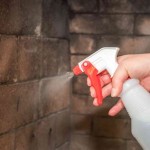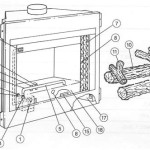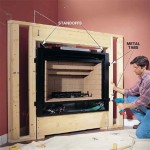Best Way to Clean a Brick Fireplace Before Painting
Painting a brick fireplace can dramatically transform a room, breathing new life into a dated feature or solidifying a chosen aesthetic. However, achieving a professional and long-lasting finish requires meticulous preparation, beginning with a thorough cleaning. Brick is a porous material that readily absorbs soot, grime, and other contaminants, which can interfere with paint adhesion and compromise the final result. This article outlines the best methods for cleaning a brick fireplace prior to painting, ensuring optimal paint application and longevity.
The success of the painting project hinges on the complete removal of residues that could hinder paint's bonding with the brick surface. These residues can range from loose debris to deeply embedded soot and grease. A lack of proper cleaning can lead to paint peeling, cracking, or an uneven finish, ultimately negating the effort and expense of painting the fireplace. Additionally, certain cleaning agents can damage the brick if not used correctly, making it crucial to choose appropriate methods and materials.
Key Point 1: Initial Surface Preparation - Removing Loose Debris and Soot
The initial stage of cleaning a brick fireplace involves removing loose debris and soot. This preparatory step sets the foundation for deeper cleaning and ensures that subsequent solutions can effectively penetrate the brick's pores. The process involves several important steps to facilitate efficient debris removal.
Begin by covering the surrounding area with drop cloths or plastic sheeting. This protects flooring, furniture, and nearby walls from dust, soot, and cleaning solutions. Secure the coverings with painter's tape to prevent slippage and ensure complete protection.
Employ a stiff-bristled brush, preferably one designed for masonry, to thoroughly scrub the brick surface. Direct the brush strokes downwards to prevent dislodging debris from scattering upwards. This initial brushing removes loose soot, dirt, and any flaking mortar.
Use a shop vacuum with a brush attachment to remove the dislodged debris. The vacuum is more effective than simply sweeping because it extracts the soot particles from the brick's crevices and pores. Pay close attention to the mortar joints, as these areas tend to accumulate the most debris.
Visually inspect the brick surface after vacuuming to identify any remaining loose debris or heavily soiled areas. Repeat the brushing and vacuuming process as needed until the majority of loose material is removed. This proactive approach will streamline the subsequent cleaning stages.
Key Point 2: Deep Cleaning the Brick - Applying Cleaning Solutions
After removing loose debris, a deep cleaning is essential to eliminate stubborn soot stains, grease, and embedded contaminants. The choice of cleaning solution depends on the severity of the soiling and the type of brick. It is always advisable to test the chosen solution on an inconspicuous area of the fireplace before applying it to the entire surface.
Option 1: Trisodium Phosphate (TSP): TSP is a powerful alkaline cleaner effective for removing grease, soot, and mildew. However, it can be harsh and may damage certain types of brick or mortar. Always wear gloves, eye protection, and a respirator when working with TSP. Mix TSP powder with water according to the manufacturer's instructions. Apply the solution to the brick surface with a scrub brush, working in small sections. Allow the solution to dwell for 10-15 minutes, then thoroughly rinse with clean water. Ensure that all traces of TSP are removed to prevent interference with paint adhesion.
Option 2: Dish Soap and Water: For less heavily soiled fireplaces, a solution of dish soap and warm water may be sufficient. Use a mild dish soap that is not abrasive, as some soaps can leave a residue. Apply the solution to the brick surface with a scrub brush, working in small sections. Rinse thoroughly with clean water. This method is gentler than TSP and is suitable for cleaning off general grime and light soot stains.
Option 3: Commercial Brick Cleaners: Numerous commercial brick cleaners are specifically formulated to remove soot and stains without damaging the brick. These cleaners typically come in spray or gel form and are applied directly to the brick surface. Always follow the manufacturer's instructions carefully, paying attention to dwell times and rinsing requirements. Some commercial brick cleaners may contain harsh chemicals, so it is essential to wear appropriate protective gear.
Option 4: Vinegar and Water: A solution of equal parts white vinegar and water can be effective for removing mild soot stains and mineral deposits. Apply the solution to the brick surface with a scrub brush or sponge. Allow the solution to dwell for 5-10 minutes, then rinse thoroughly with clean water. Vinegar is a natural cleaner and is less harsh than TSP or some commercial brick cleaners.
After applying the chosen cleaning solution, use a stiff-bristled brush to scrub the brick surface thoroughly. Pay particular attention to mortar joints, as these areas are more porous and tend to trap dirt and grime. Use circular motions to loosen the contaminants and ensure that the cleaning solution penetrates the brick's pores.
Rinse the brick surface thoroughly with clean water after scrubbing. Use a garden hose with a spray nozzle or a bucket of clean water and a sponge to remove all traces of the cleaning solution. Ensure that no residue remains, as this could interfere with paint adhesion. Repeat the rinsing process as needed until the water runs clear.
Key Point 3: Addressing Stubborn Stains and Efflorescence
Some fireplaces may have stubborn stains or efflorescence (a white, powdery deposit) that require specialized treatment. Addressing these issues before painting is crucial to ensure a uniform and long-lasting finish. Failure to remove stubborn stains or efflorescence can lead to paint discoloration, bubbling, or peeling.
Removing Stubborn Soot Stains: For deeply embedded soot stains, consider using a poultice. A poultice is a paste-like mixture that is applied to the stain and allowed to dry, drawing out the contaminants. Mix powdered diatomaceous earth or baking soda with water or hydrogen peroxide to form a thick paste. Apply the poultice to the stained area and cover it with plastic wrap. Allow the poultice to dry completely, which may take several hours or even overnight. Once dry, scrape off the poultice and rinse the area thoroughly with clean water. Repeat the process if necessary.
Removing Grease Stains: Grease stains can be particularly difficult to remove from brick. One effective method is to apply a degreasing agent, such as mineral spirits or acetone, to the stained area. Use a clean cloth to blot the grease stain, working from the outside in to prevent spreading. Allow the degreasing agent to dwell for 10-15 minutes, then wipe it away with a clean cloth. Be sure to ventilate the area well when working with these solvents.
Removing Efflorescence: Efflorescence is caused by water-soluble salts migrating to the surface of the brick and forming a white, powdery deposit. To remove efflorescence, first brush the area with a stiff-bristled brush to remove the loose powder. Then, apply a solution of muriatic acid (hydrochloric acid) diluted with water according to the manufacturer's instructions. Always add the acid to the water, never the other way around. Wear gloves, eye protection, and a respirator when working with muriatic acid. Apply the solution to the affected area with a scrub brush, working in small sections. Allow the solution to dwell for a few minutes, then rinse thoroughly with clean water. Neutralize the acid residue by rinsing the area with a solution of baking soda and water. Efflorescence may reappear over time if the underlying moisture problem is not addressed.
Following the cleaning process, allow the brick fireplace to dry completely before painting. This may take several days, depending on the humidity and temperature. Use a moisture meter to ensure that the brick is sufficiently dry before proceeding. Painting damp brick can lead to paint failure and moisture damage.
Once the brick is completely dry, prime the surface with a masonry primer. A primer creates a uniform surface for the paint to adhere to and helps to seal the brick, preventing it from absorbing moisture. Choose a primer that is specifically designed for masonry surfaces and follow the manufacturer's instructions carefully.
After priming, the brick fireplace is ready to be painted. Choose a high-quality paint that is suitable for masonry surfaces and apply it according to the manufacturer's instructions. Multiple coats may be necessary to achieve the desired color and coverage.
Thoroughly cleaning a brick fireplace before painting is an essential step in achieving a professional and long-lasting finish. By following the methods outlined in this article, individuals can effectively remove soot, grime, stains, and efflorescence, ensuring that the paint adheres properly and the fireplace looks its best for years to come. Prioritizing proper surface preparation before painting saves time and resources in the long run, preventing costly repairs due to paint failure.

How To Clean A Brick Fireplace Before Painting

Painting Brick Fireplace White A Renovation Story

Whitewash Your Brick Fireplace With Limewash Paint Romabio

Paint Fireplace Brick

How To Whitewash Brick Fireplace Painting

Mortar Wash Brick Fireplace Makeover Dimples And Tangles

How To Whitewash A Brick Fireplace Easiest Method For 2024

Painting A Brick Fireplace S Bricks Or Concrete Diy How To Paint Stone

Fireplace Cleaning Tutorial Kippi At Home

Diy Painted Brick Fireplace Makeover On A Budget Before After The Confused Millennial








